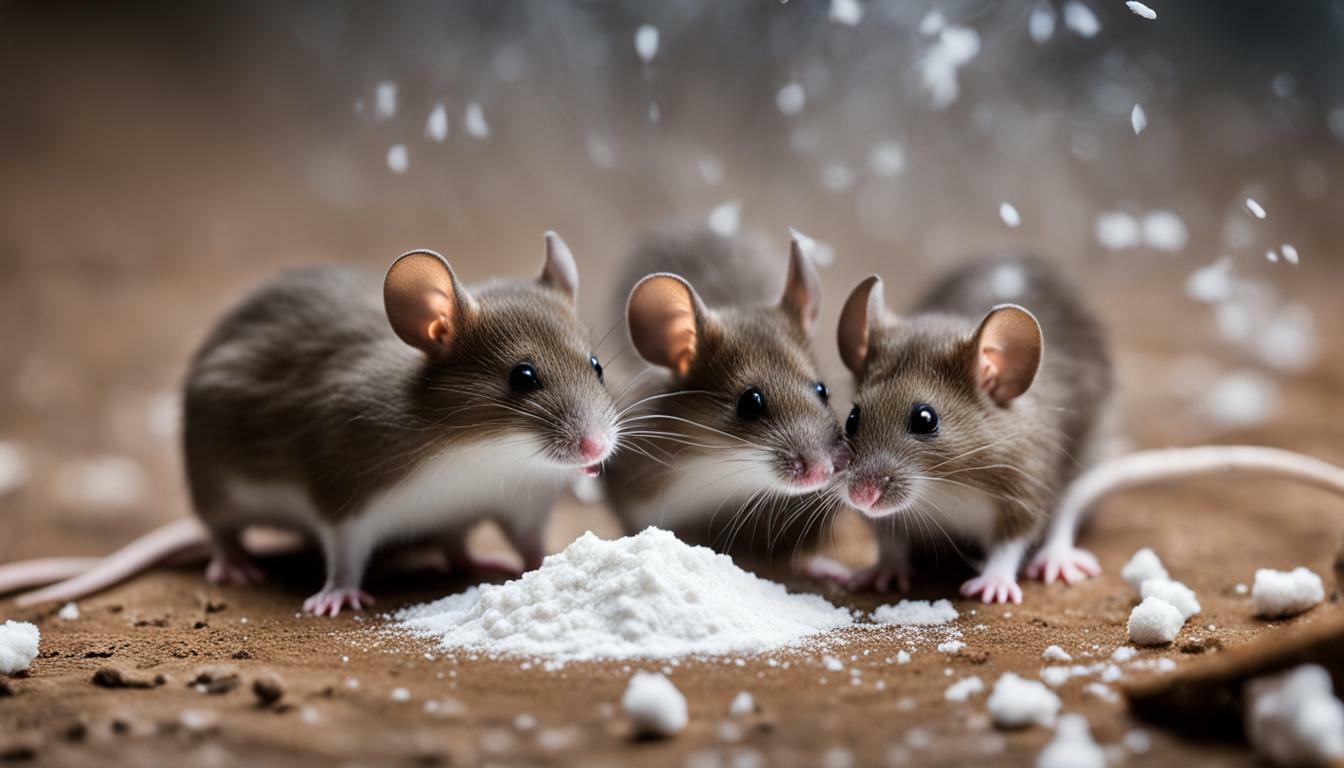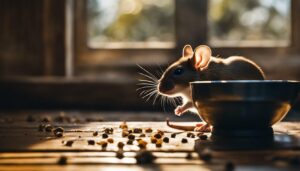If you’ve ever wondered if mice have a penchant for flour, you’re in the right place. Mice are attracted to a variety of foods, including flour.
They have a preference for grains and seeds, but they will also eat cookies, rice, beans, noodles, and even meat.
It’s important to understand their dietary habits to effectively prevent infestations and protect your home.
- Mice are attracted to flour, grains, seeds, and a wide range of other foods.
- They can cause damage by chewing through food containers and contaminating the remaining food.
- Storing food in airtight containers and sealing up openings can help prevent infestations.
- Mice are also attracted to the smell of leftover food, cheese, peanut butter, fruits, and grains.
- Maintaining cleanliness in your home is crucial in deterring mice.
In the following sections, we will explore the mouse diet in more detail, discuss the damages they can cause, and provide effective prevention methods to keep your home rodent-free.
Stay tuned for valuable insights and practical tips!
Understanding Mouse Diets
Mice are known for their wide-ranging appetites and will eat a variety of foods. Their diet primarily consists of grains and seeds, but they are not picky eaters.
In fact, mice will also consume cookies, rice, beans, noodles, and even meat if given the opportunity.
Therefore, it is important to be aware of the potential attractants in your home that might draw these rodents indoors.
To prevent mice infestations, it’s crucial to understand what they find most enticing. Mice are particularly attracted to the smell of leftover food, making cheese, peanut butter, fruits, grains, and seeds highly appealing to them.
These delicacies serve as irresistible treats that can easily lure them into your living spaces. By keeping your kitchen clean and ensuring the proper storage of food items, you significantly reduce the risk of attracting these unwanted pests.
Common Foods Mice Are Attracted To:
- Cheese
- Peanut butter
- Fruits
- Grains
- Seeds
Understanding the specific foods that attract mice allows you to take proactive measures in preventing infestations.
By storing food in airtight containers, you create a barrier that mice cannot easily breach. Additionally, sealing up any openings in your home, such as cracks or holes, helps keep these tiny intruders from gaining access.
When it comes to managing mouse infestations, remember that prevention is key. By maintaining a clean and tidy home, storing food properly, and eliminating potential entry points, you can greatly reduce the likelihood of encountering these pests.
However, if you suspect or confirm a mouse infestation, it is advisable to seek professional pest control services to address the issue promptly and effectively.

Mice are particularly drawn to certain types of food, making it crucial to understand what might be enticing them in your pantry.
One of the most common foods that attract mice is cheese. The strong smell and rich flavor of cheese make it irresistible to these rodents.
Peanut butter is another favorite, with its high fat content providing a tempting treat for hungry mice.
In addition to cheese and peanut butter, mice are also attracted to fruits, grains, and seeds. These items are easily accessible in most kitchens and provide mice with a good source of nutrients.
You may find that mice have nibbled on your fresh produce or raided your cereal boxes.
It’s important to note that mice are not picky eaters and will consume a variety of other foods as well.
They have a preference for grains and seeds, but they will also eat cookies, rice, beans, noodles, and even meat.
Therefore, it’s essential to store all types of food securely to prevent mice from accessing it.
| Foods That Attract Mice | Examples |
|---|---|
| Cheese | Cheddar, Swiss, Brie |
| Peanut butter | Creamy, crunchy |
| Fruits | Apples, bananas, oranges |
| Grains | Rice, oats, bread |
| Seeds | Sunflower seeds, pumpkin seeds |
To deter mice from your home, it’s important to keep a clean and tidy environment. Wipe down countertops, sweep floors, and remove any food crumbs or spills.
Store food in airtight containers to eliminate tempting odors that may attract these pests. By taking these preventative measures, you can minimize the risk of a mouse infestation and protect your pantry from their hungry appetites.
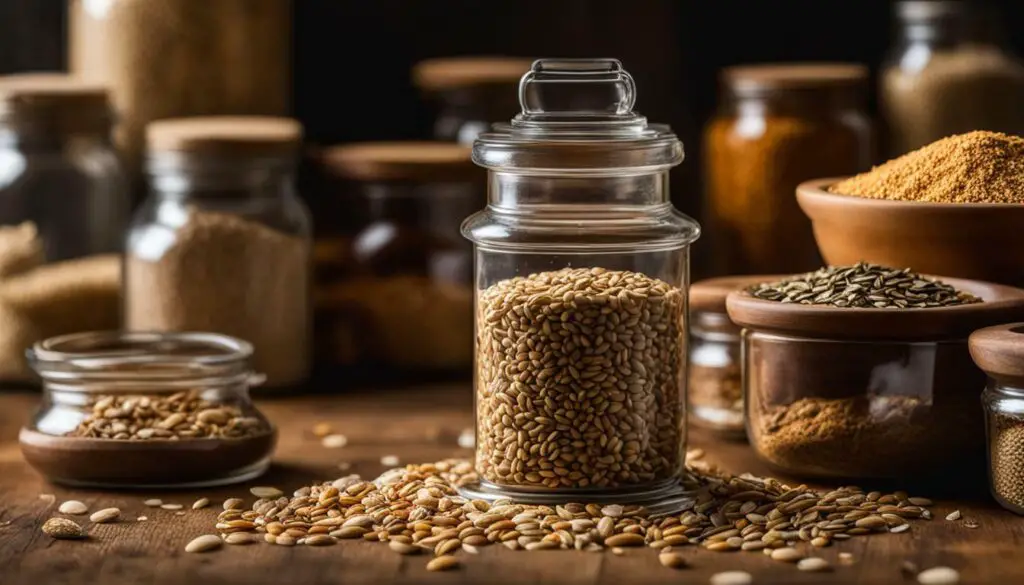
Mice can wreak havoc in your home, causing significant damage and posing a threat to your health and hygiene.
These household pests have a voracious appetite and are attracted to a variety of foods, including flour.
They have a particular preference for grains and seeds, but they will not hesitate to eat cookies, rice, beans, noodles, and even meat if it is accessible.
One of the main concerns when it comes to mice is their ability to chew through food containers. They possess sharp incisors that continually grow, leading them to gnaw on plastic, paper, and cardboard in their quest for sustenance.
This behavior can result in the contamination of remaining food with urine and feces, posing a health risk to you and your family.
To protect your food from these unwanted visitors, it is crucial to store it in airtight containers that mice cannot penetrate.
This prevents them from accessing your supplies and reduces the risk of contamination. Additionally, mice are attracted to the smell of leftover food, cheese, peanut butter, fruits, grains, and seeds.
By maintaining a clean and tidy home, sealing up any openings that mice can use to enter, and storing food properly, you can minimize the likelihood of a mice infestation and the damages associated with it.
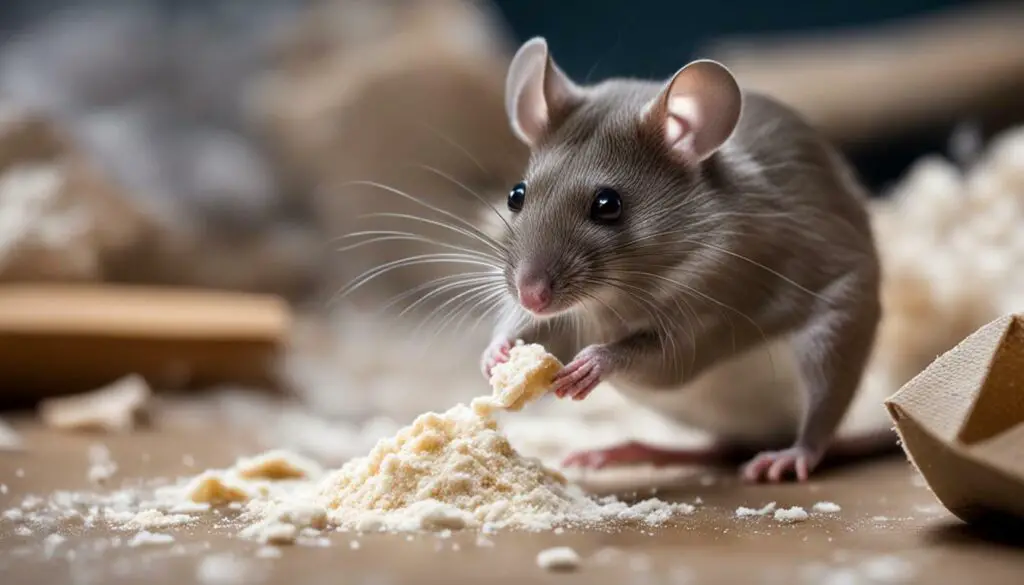
| Signs of a Mouse Infestation | Pest Control |
|---|---|
|
|
By being aware of the damages caused by mice, you can prioritize pest prevention and ensure the safety and cleanliness of your home.
Remember, it is always better to take proactive measures to prevent an infestation rather than dealing with the consequences afterward.
Keep a watchful eye for signs of mice, and if needed, seek professional pest control assistance to address the issue effectively.
Effective Prevention Methods
Taking proactive measures can help minimize the chances of a mouse infestation in your home. Mice are attracted to a variety of foods, including flour, grains, seeds, cheese, peanut butter, fruits, and more.
By sealing up any openings that mice can use to enter your home and storing food properly, you can greatly reduce the risk of these unwanted visitors.
Start by inspecting your home for any cracks, gaps, or holes that could serve as entry points for mice. Common areas to check include doors, windows, vents, and pipes.
Use caulk or steel wool to seal up any openings, ensuring that mice cannot squeeze through.
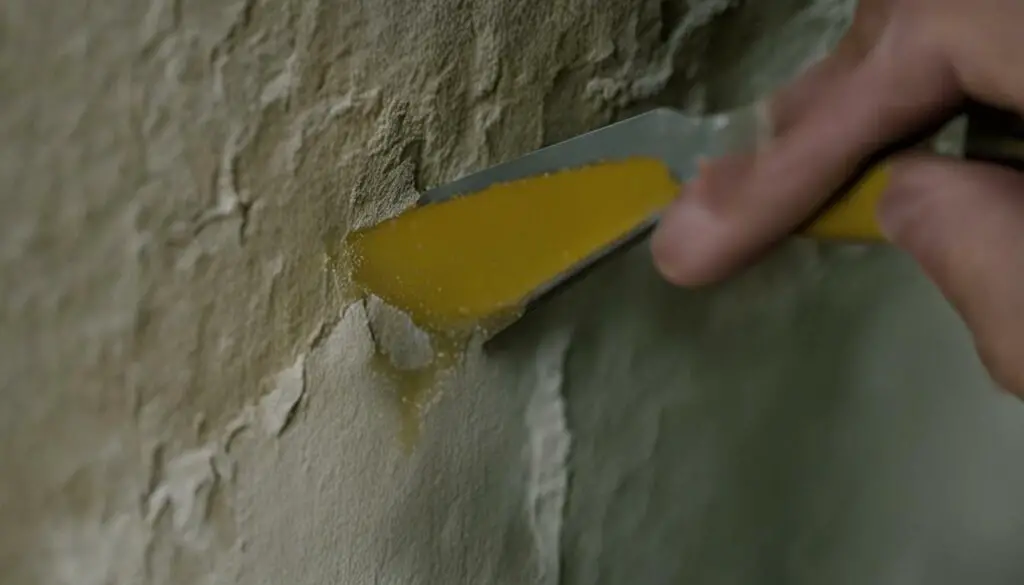
When it comes to storing food, opt for airtight containers that mice cannot chew through. This will prevent them from accessing your food and contaminating it with their urine and feces.
Make sure to secure all food items, including grains, seeds, and snacks, in these containers. Keeping your kitchen clean and tidy is also important, as mice are attracted to the smell of leftover food.
Wipe down countertops, sweep the floor, and promptly remove any food crumbs or spills.
To further deter mice, consider removing any clutter or debris from around your home, as these provide hiding places for them.
Regularly inspect and clean storage areas, such as basements, attics, and garages, to minimize opportunities for mice to nest.
Importance of Cleanliness
Keeping your home clean and free from food debris is crucial in discouraging mice from making themselves at home.
These pesky rodents are attracted to the smell of leftover food, as well as common items found in most kitchens.
To effectively prevent mouse infestations, it’s important to maintain a clean and tidy living space.
Start by regularly cleaning your kitchen and dining areas, ensuring that all surfaces are wiped down and free from crumbs.
Mice have a keen sense of smell and can detect even the smallest food particles. By eliminating these attractive scents, you can significantly reduce the likelihood of mice invading your home.
Furthermore, pay close attention to proper food storage. Store all food items in airtight containers to prevent mice from accessing them.
This includes not only pantry staples like flour, grains, and seeds, but also items like cheese, peanut butter, fruits, and even leftover meat.
By denying mice easy access to these tasty treats, you’ll make your home a less appealing target for them.

Lastly, don’t forget about the importance of general cleanliness throughout your home. Regularly sweep and mop floors, vacuum carpets, and empty trash cans to remove any potential food sources for mice.
Additionally, seal up any openings that mice can use to enter your home, such as gaps around windows, doors, and pipes.
These small preventive measures can go a long way in keeping your home free from unwanted pests.
Signs of a Mouse Infestation
Identifying the signs of a mouse infestation is key to taking swift action and preventing the problem from escalating.
Mice are nocturnal creatures that often go unnoticed during the day. However, there are several indications that can alert you to the presence of these pesky rodents in your home.
One of the most common signs is the appearance of droppings. Mouse droppings are small, dark, and cylindrical in shape.
You may find them in areas where mice frequently travel, such as along baseboards, in cabinets, or near food sources.
If you notice droppings, it is important to act quickly as mice can reproduce rapidly, leading to a larger infestation.
Another telltale sign is gnaw marks on furniture, walls, or food packaging. Mice have a constant need to chew in order to keep their teeth from overgrowing, so they will gnaw on anything they can find.
If you come across small holes or chewed materials, it is a clear indication that mice have been present.
Lastly, you may hear scratching or scampering noises, especially at night when mice are most active. These sounds are often heard in ceilings, walls, or behind appliances.
If you notice any of these auditory signals, it is important to investigate further to confirm the presence of mice in your home.
| Signs | Description |
|---|---|
| Droppings | Small, dark, cylindrical pellets found near food sources and along mouse pathways. |
| Gnaw Marks | Visible bite marks on furniture, walls, or food packaging. |
| Scratching Noises | Audible sounds of mice scurrying, often heard in ceilings, walls, or behind appliances. |
If you observe any of these signs, it is important to take immediate action to address the mouse infestation.
Ignoring the problem can lead to further damage and potential health risks, as mice are known carriers of diseases.
Contacting a professional pest control service is often the best course of action to effectively eliminate the infestation and prevent future occurrences.
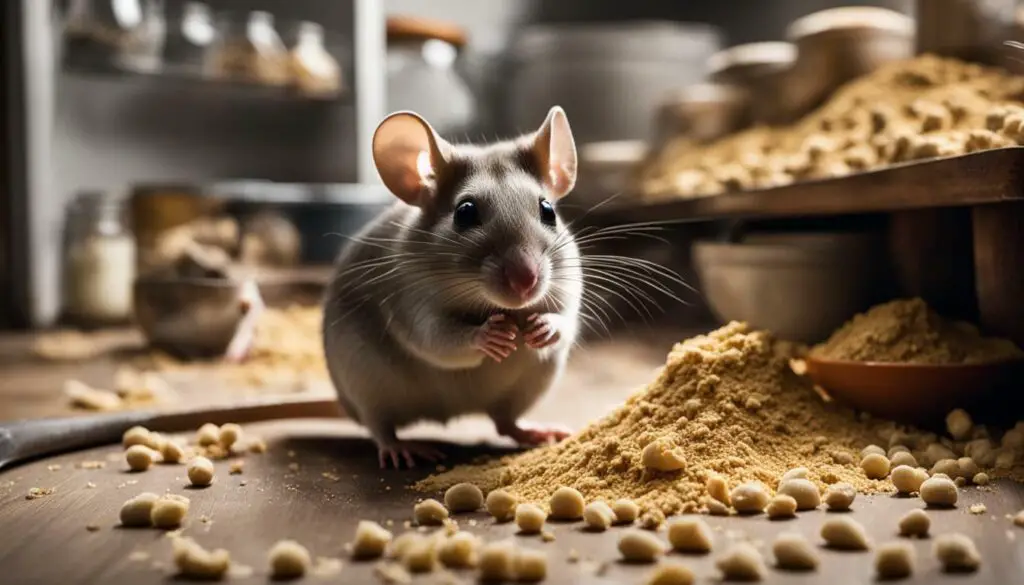
While DIY methods can be effective to some extent, sometimes it’s best to leave the task of mouse control to the professionals.
Pest control experts are trained to effectively handle and eliminate mouse infestations, ensuring that your home remains safe and rodent-free.
Professional pest control companies have the knowledge, experience, and tools necessary to tackle even the most stubborn mouse problems.
They can conduct a thorough inspection of your property to identify entry points and assess the extent of the infestation.
Using proven methods and advanced techniques, they can safely and effectively remove mice from your home.
Choosing professional pest control also offers the added benefit of preventing future infestations.
These experts can provide valuable advice on how to mouse-proof your home, including sealing up openings, implementing effective deterrents, and creating an environment that is less attractive to rodents.
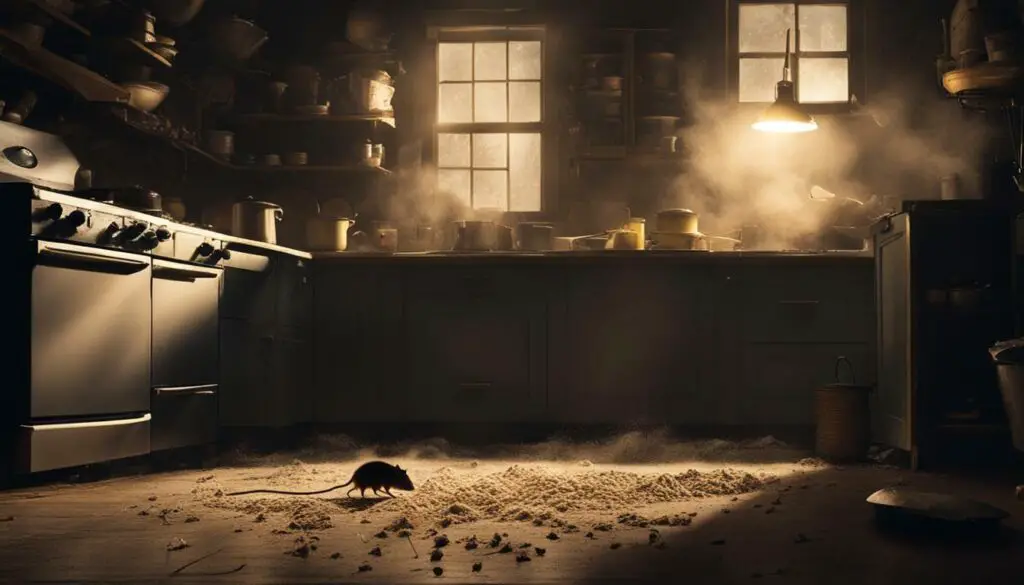
By relying on pest control professionals, you can save yourself the time, effort, and potential frustration of dealing with a mouse infestation on your own.
Their expertise ensures a more efficient and thorough resolution, giving you peace of mind knowing that your home is protected from these unwanted guests.
Flour in Rodents’ Diet
Flour can be a tempting treat for mice due to its grain-based composition. Mice are naturally attracted to grains and seeds, and flour falls into this category.
It provides mice with a readily available food source that is rich in carbohydrates. These little critters have a keen sense of smell and can detect the presence of flour even in small amounts.
Once they find a source, they will not hesitate to nibble away, causing potential damage to your pantry.
When mice consume flour, they not only satisfy their hunger but also meet their nutritional needs.
Additionally, flour is often used as an ingredient in homemade baits and traps designed to capture and eliminate mice.
The grainy texture and enticing aroma of flour make it a suitable choice for luring these pests into traps.
However, it is important to note that relying solely on flour as a bait may not guarantee effective control of a mouse infestation.
To protect your pantry from these unwanted visitors, it is crucial to store flour and other food items in airtight containers.
This prevents mice from accessing the food and helps preserve its freshness. Regularly inspect your pantry for signs of rodent activity, such as chewed packaging or droppings, and take immediate action if necessary.
Sealing up any openings in your home and keeping a clean and tidy environment also play a significant role in deterring mice from entering your living spaces.
| Food | Reason for Attraction |
|---|---|
| Cheese | Mice are drawn to the strong smell and taste of cheese |
| Peanut Butter | The rich, nutty flavor of peanut butter is highly appealing to mice |
| Fruits | The sweetness and moisture of fruits are enticing to mice |
| Grains | Mice have a natural preference for grains due to their high carbohydrate content |
| Seeds | The small size and high nutritional value of seeds make them an attractive food source for mice |
Remember, if you suspect a mouse infestation in your home, it is important to address the issue promptly.
Professional pest control services can assist you in safely eliminating these pests and preventing future invasions.
By taking proactive measures and being vigilant about food storage and cleanliness, you can minimize the risk of mice finding their way into your pantry and wreaking havoc.
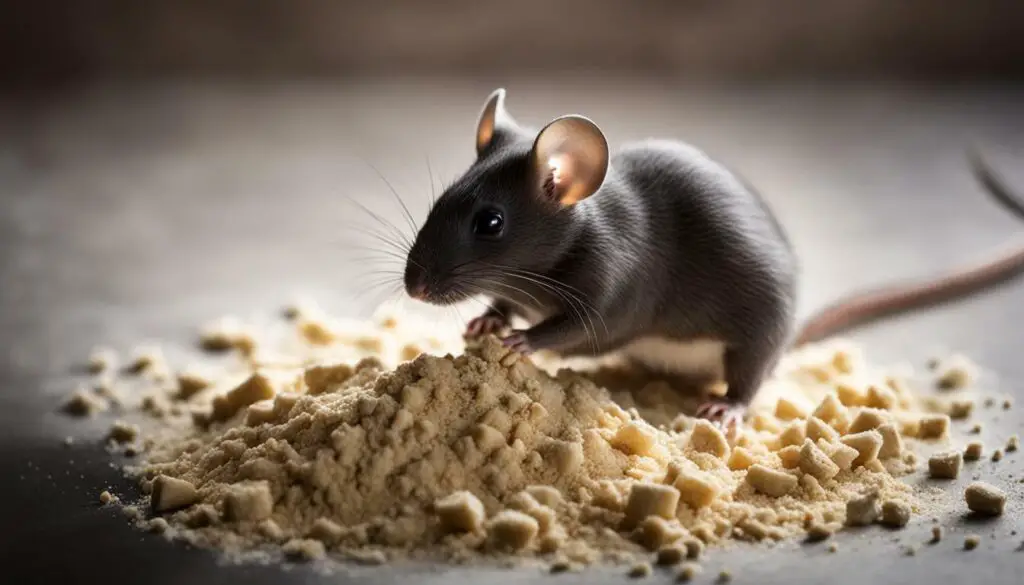
In conclusion, mice have a diverse diet that includes flour, but there are steps you can take to minimize the risk of infestation and protect your home and food supplies.
Mice are attracted to a variety of foods, such as grains, seeds, cookies, rice, beans, noodles, and even meat.
They can cause damage by chewing through food containers and contaminating the remaining food with urine and feces.
To prevent mice from accessing your food, it is crucial to store it in airtight containers.
Additionally, mice are drawn to the smell of leftover food, cheese, peanut butter, fruits, grains, and seeds.
Maintaining a clean and tidy home, sealing up any openings that mice could use to enter, and storing food properly in sealed containers can help deter mice infestations.
By implementing these preventative measures, you can significantly reduce the chances of mice entering your home and causing damage to your food supplies.
Remember to stay vigilant for common signs of a mouse infestation and seek professional pest control assistance if needed.
FAQ
Do mice eat flour?
Yes, mice are known to eat flour. While they have a preference for grains and seeds, flour is also on their menu. They are attracted to its scent and will consume it if it is accessible. It is important to store flour in airtight containers to prevent mice from accessing it and potentially contaminating it with their urine and feces.
What do mice eat?
Mice have a diverse diet and are attracted to a variety of foods. They prefer grains and seeds but will also eat cookies, rice, beans, noodles, and even meat. Additionally, mice are attracted to the smell of leftover food, cheese, peanut butter, fruits, grains, and seeds.
What damages can mice cause?
Mice can cause damage by chewing through food containers, making them ineffective in protecting your food. They can also contaminate the remaining food with their urine and feces, posing health risks. It is crucial to store food in airtight containers to prevent mice from accessing it and causing these damages.
How can I prevent mice infestations?
To prevent mice infestations, it is important to keep a clean and tidy home. Seal up any openings that mice can use to enter your home, such as cracks and gaps. Store food properly in airtight containers to eliminate attractive food sources. Regularly clean up any spilled food or crumbs that may attract mice.
What are the signs of a mouse infestation?
There are several signs that indicate a mouse infestation. Look out for droppings, chewed food packaging, gnaw marks on furniture or walls, and the presence of nests made from shredded materials. Unusual noises, such as scratching or squeaking, and a strong, musky odor may also indicate the presence of mice in your home.
Should I call professional pest control for a mouse infestation?
If you have a persistent or severe mouse infestation, it is recommended to call professional pest control. They have the knowledge and expertise to effectively eliminate the mice and prevent future infestations. Pest control professionals can also provide advice on preventing mouse entry points and offer additional measures for long-term pest control.
Why are mice attracted to flour?
Mice are attracted to the scent of flour. While their preference lies with grains and seeds, the smell of flour can also appeal to them. It is important to store flour in airtight containers to prevent mice from accessing it and potentially contaminating it with their urine and feces.

